Have you ever wondered why do dogs have wet noses? This intriguing question has fascinated pet owners and animal lovers alike for generations. A dog’s nose is not just cute; it serves several important purposes that might surprise you! From regulating temperature to enhancing their sense of smell, the fascinating reasons behind this unique trait are worth exploring. But what makes their noses so distinctive? Is it just a natural quirk, or does it hold deeper meanings related to a dog’s health and behavior? In this article, we will uncover the secrets behind those wet noses and why they matter so much in a dog’s life. You might be curious if a wet nose indicates a healthy dog or if it’s a sign of something more serious. Join us as we delve into the science and myths surrounding this delightful aspect of canine anatomy. By the end, you’ll not only understand why do dogs have wet noses, but you’ll also gain insights into your furry friend’s well-being. So, let’s jump right in and satisfy your curiosity about our beloved companions!
The Science Behind Dog Noses: Why Are They Always Wet? Exploring Canine Anatomy
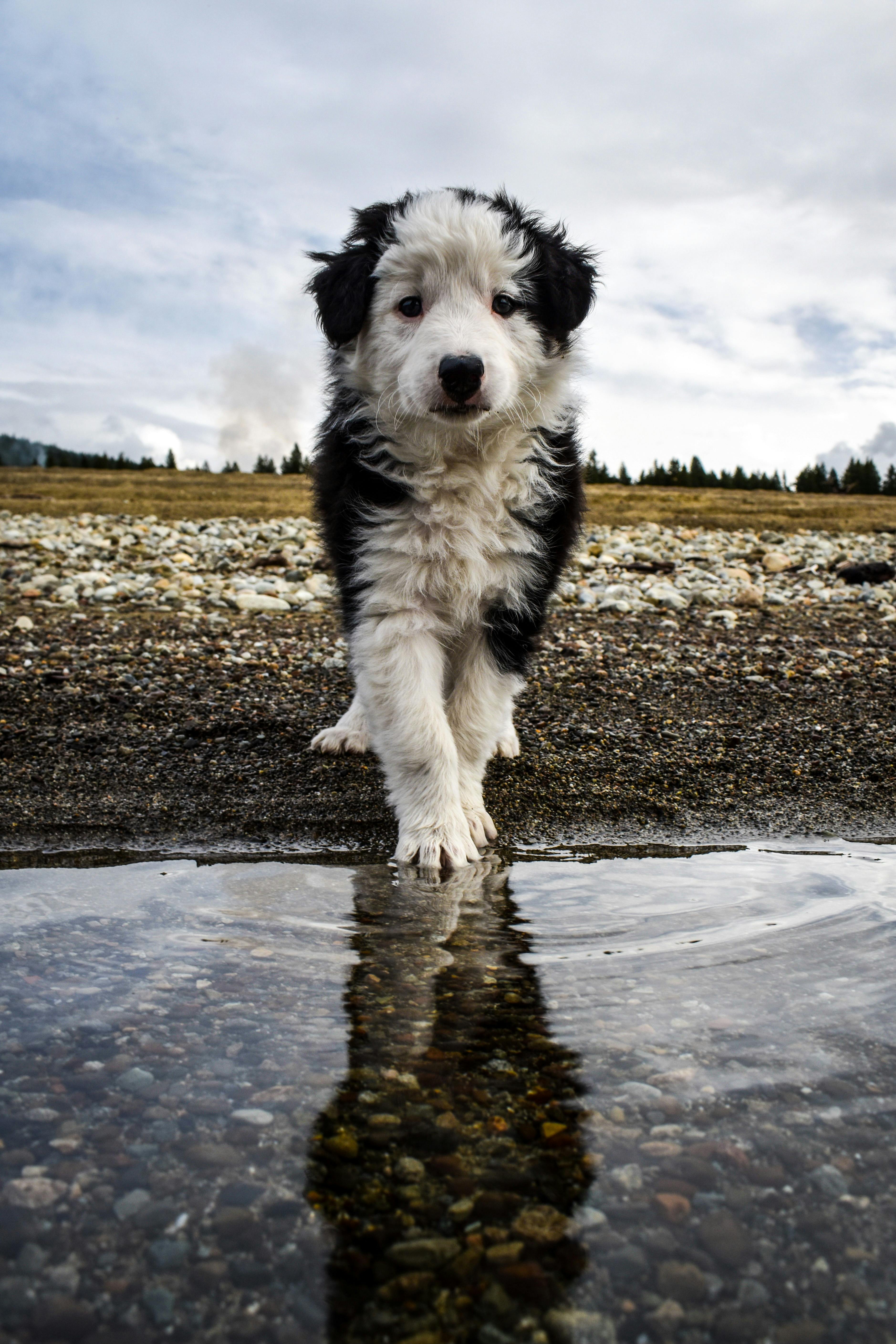
Dogs have been companions to humans for thousands of years, and one of the most curious things about them is their noses. If you ever wonder why are dog noses always wet, you’re not alone. This question leads us down a rabbit hole of fascinating canine anatomy and biology, revealing much about how our four-legged friends interact with the world.
The Anatomy of a Dog Nose
Dog noses are not just cute; they’re complex organs, full of surprises. Here’s some fact about their anatomy:
- Olfactory Receptors: Dogs have around 300 million olfactory receptors in their noses, compared to just about 6 million in humans. This means they can sniff out smells that are undetectable to us.
- Moisture: The moisture on a dog’s nose helps to dissolve scent particles. When the particles dissolve, it makes it easier for the dog to detect and identify various smells.
- Nasal Turbinates: These are bony structures within the nasal cavity, increasing the surface area to help them process scents better.
Why Do Dogs Have Wet Noses?
So, why do dogs have wet noses? There are a few compelling reasons behind this, and some of them are pretty interesting. Here are some of the main points:
- Thermoregulation: Dogs cannot sweat like humans do. Instead, they cool off through their noses and panting. The moisture helps keep their body temperature in check.
- Scent Detection: Wet noses can absorb scent particles better than dry noses. When a dog’s nose is moist, it can pick up on scents more effectively, which is crucial for hunting, tracking, and simply exploring their environment.
- Health Indicator: A wet nose is often seen as a sign of a healthy dog. However, it’s not the only indicator, and a dry nose doesn’t necessarily mean a dog is sick.
Fascinating Reasons Behind Wet Noses
Let’s break down some more intriguing facts about dog noses and why they stay wet:
- Glands: Dogs have special glands in their noses that produce moisture. This is part of why their noses are always damp.
- Behavioral Aspect: When dogs greet each other, they often sniff each other’s noses. This is a way of gathering information about the other dog. The wetness helps in this information exchange.
- Environmental Influence: Factors like humidity and temperature can affect how wet a dog’s nose is. On a hot day, for instance, dogs may lick their noses more often to keep cool.
Historical Context
Historically, dogs were bred for specific tasks, many of which relied on their incredible sense of smell. For example, bloodhounds were used for tracking and hunting due to their keen noses. As humans domesticated dogs, they recognized the importance of this trait.
Comparisons with Other Animals
Dogs aren’t the only animals with wet noses. Here’s how they stack up against other animals:
- Cats: Cats also have wet noses, but their olfactory receptors are significantly fewer than in dogs.
- Pigs: Pigs have a highly developed sense of smell, but their noses are not as moist as dogs.
- Humans: Humans rely more on sight than smell, which is why our noses are dry and less sensitive.
Practical Examples of Dog Nose Functions
To understand the significance of a dog’s wet nose, consider these practical examples:
- Tracking: A dog can track a scent trail left by a person or animal. This is used in search and rescue operations.
- Detection: Dogs are used in various fields like law enforcement to sniff out drugs or explosives due to their acute sense of smell.
- Health Monitoring: Some dogs can even detect medical conditions in humans, such as cancer or diabetes, through their sense of smell.
Fun Facts About Dog Noses
Here are some fun facts that you might not know about dog noses:
- A dog’s nose print is unique, just like a human fingerprint.
- The color of a dog’s nose can vary widely, and it can change due to age or health.
- Dogs can smell up to 100,000 times better than humans, making their noses one of their most valuable assets.
In summary, the wet noses of dogs are not just an adorable trait; they serve crucial roles in thermoregulation, scent detection, and social interaction. Understanding why do dogs have wet noses helps us appreciate our canine companions even more. It’s a small yet significant aspect of their biology that connects them to the world in ways we often overlook. So next time you pet your furry friend, take a moment to marvel at that wet nose and what it signifies about their remarkable abilities!
5 Fascinating Reasons Dogs Have Wet Noses: What This Means for Their Health

Dogs are often considered man’s best friend, and one of the most endearing traits they have is their wet noses. Have you ever wondered why do dogs have wet noses? It’s kinda fascinating and there are several reasons that contribute to this unique feature. Not only does it play a role in their health, but it also serves some interesting purposes. Here, we explore five captivating reasons behind those moist noses and what it means for our furry companions’ well-being.
1. Enhanced Sense of Smell
One of the primary reasons why dogs have wet noses is that it helps them smell better. The moisture on their noses assist in capturing scent particles from the air. Dogs have an incredible sense of smell—up to 100,000 times better than humans! When their noses are moist, it helps to dissolve these scent particles, making it easier for them to detect and identify different smells.
- Dogs can detect certain diseases in humans, like cancer or diabetes, merely through scent.
- Their sense of smell is so advanced that they can even differentiate between different emotions based on scent.
2. Temperature Regulation
Just like humans sweat to cool down, dogs use their noses to help regulate body temperature. The moisture in their noses evaporates, which can provide a cooling effect. This is especially important since dogs don’t sweat as efficiently as we do. Instead, they rely on panting and the wetness of their noses to help maintain a comfortable body temperature.
- A dog’s normal body temperature ranges from 101 to 102.5 degrees Fahrenheit.
- If a dog’s nose is dry, it can be a sign they are overheated or dehydrated.
3. Communication Tool
Believe it or not, a dog’s wet nose also serves as a communication tool. When dogs greet each other, they often sniff each other’s noses. This is not just a friendly gesture; it helps them gather information about each other. A wet nose can indicate health and vitality, which can influence how other dogs perceive them.
- Dogs use their noses to learn about other dogs’ diets, emotions, and health.
- A wet nose can signify a dog’s excitement or happiness when they meet someone new.
4. Protective Barrier
The wetness of a dog’s nose also serves as a protective barrier. It helps to keep the nose moist and prevents it from cracking. A dry nose can lead to discomfort and potential health issues, like infections or skin problems. Keeping the nose wet helps maintain its integrity and overall health.
- Dogs are prone to nasal tumors if they have chronic dry noses.
- Regularly checking your dog’s nose can help catch health issues early.
5. Connection to Health
Interestingly, the condition of a dog’s nose can be an indicator of their overall health. While a wet nose is usually a sign of a healthy dog, a dry or excessively warm nose could signal underlying health problems. This can include dehydration, fever, or even respiratory issues. So, it’s important to monitor your dog’s nose condition regularly.
- A normal wet nose is generally a good sign of hydration and health.
- If you notice significant changes in your dog’s nose, it’s advisable to consult a veterinarian.
Quick Facts About Dog Noses
Here’s a quick summary of some important facts regarding dog noses:
- Dogs have approximately 300 million smell receptors, compared to about 6 million in humans.
- The surface area of a dog’s nose is about 1,500 times larger than a human’s.
- A dog’s sense of smell can be trained for various tasks, such as search and rescue, detection of drugs, and even locating lost persons.
Final Thoughts
Understanding why do dogs have wet noses not only satisfies our curiosity but also deepens our connection with these beloved companions. Their wet noses play vital roles in their health, communication, and abilities. So next time you pet your furry friend, take a moment to appreciate that damp little nose and what it signifies. After all, our dogs give us unconditional love and companionship, making them truly special in our lives.
Do Wet Noses Indicate a Healthy Dog? Understanding the Connection Between Moisture and Well-being

When you see a dog with a wet nose, it can seem like the pup is just being cute. But there’s also a lot more to it. Many people often wonder, “Do wet noses indicate a healthy dog?” The connection between a dog’s nose moisture and their overall well-being is intricate and fascinating. Let’s dive into why dogs have wet noses and discover the reasons behind this intriguing phenomenon.
The Science Behind Wet Noses
A dog’s nose is not just for sniffing around. It’s a complex organ that plays a crucial role in their health and behavior. Here’s some important facts about wet noses:
- Temperature Regulation: Dogs don’t sweat like humans do. They rely on their noses to help regulate body temperature. The moisture on their nose evaporates, which cools them down.
- Enhanced Sense of Smell: A wet nose helps to capture scent particles from the air. This makes it easier for dogs to detect smells. The moisture creates a better surface for the olfactory receptors to work effectively.
- Health Indicator: While a wet nose is often considered a sign of a healthy dog, it’s not the only factor to consider. A healthy dog’s nose may vary in temperature and moisture throughout the day.
Why Do Dogs Have Wet Noses?
There’s several reasons why dog noses tend to be wet. Here’s a breakdown of some common explanations:
- Natural Moisture: Dogs’ noses are usually moist due to the natural secretion of mucus. This keeps their noses lubricated and helps them smell better.
- Licking: Dogs often lick their noses. This behavior not only keeps their noses clean but also adds moisture. It’s a common practice for many dogs.
- Environmental Factors: Weather and humidity can affect your dog’s nose moisture. On hot days, for example, you might notice it being damper.
- Health Conditions: Sometimes, changes in nose moisture can indicate health issues. A dry or cracked nose could signal dehydration, fever, or other health problems.
The Importance of Nose Check-ups
Regularly checking your dog’s nose can reveal a lot about their health. Here’s what to keep in mind:
- Normal Moisture Levels: A healthy dog’s nose should feel moist and cool to the touch. However, it’s not unusual for the moisture to change throughout the day.
- Signs of Concern: If your dog’s nose becomes excessively dry, cracked, or shows signs of discharge, it might be time for a vet visit. Other symptoms like lethargy or loss of appetite should also raise red flags.
- Behavioral Changes: If your dog is licking their nose more than usual, or if they keep rubbing their face on the ground, these could be signs of allergies or irritation.
Fun Facts About Dog Noses
Did you know that dog noses are as unique as human fingerprints? Here’s some interesting trivia that might surprise you:
- Nose Prints: Each dog has a unique nose print. Just like fingerprints, these patterns can be used to identify dogs.
- Sniffing Power: Dogs have up to 300 million scent receptors in their noses, compared to about 5 million in humans! This makes their sense of smell incredibly powerful.
- Nasal Heat Sensors: Dogs can detect heat through their noses. This ability helps them find prey or even locate lost people.
Caring for Your Dog’s Nose
To ensure that your dog’s nose stays healthy, consider these tips:
- Hydration: Always provide fresh water for your dog. Staying hydrated helps maintain moisture levels in their nose.
- Humid Environment: If you live in a dry climate, consider using a humidifier at home. This can help keep your dog’s nose moist.
- Regular Vet Check-ups: Routine vet visits are essential for monitoring your dog’s health, including their nose condition.
In conclusion, while a wet nose can indicate a healthy dog, it’s important to look at the bigger picture. Understand that several factors influence a dog’s nose moisture. Regular observation and care can help ensure your furry friend stays healthy and happy. So, the next time you see that adorable wet nose, remember the science and wonder behind it. It’s not just a cute feature; it’s a vital part of your dog’s well-being!
Can Dogs Smell Better with Wet Noses? The Surprising Truth About Canine Olfactory Abilities
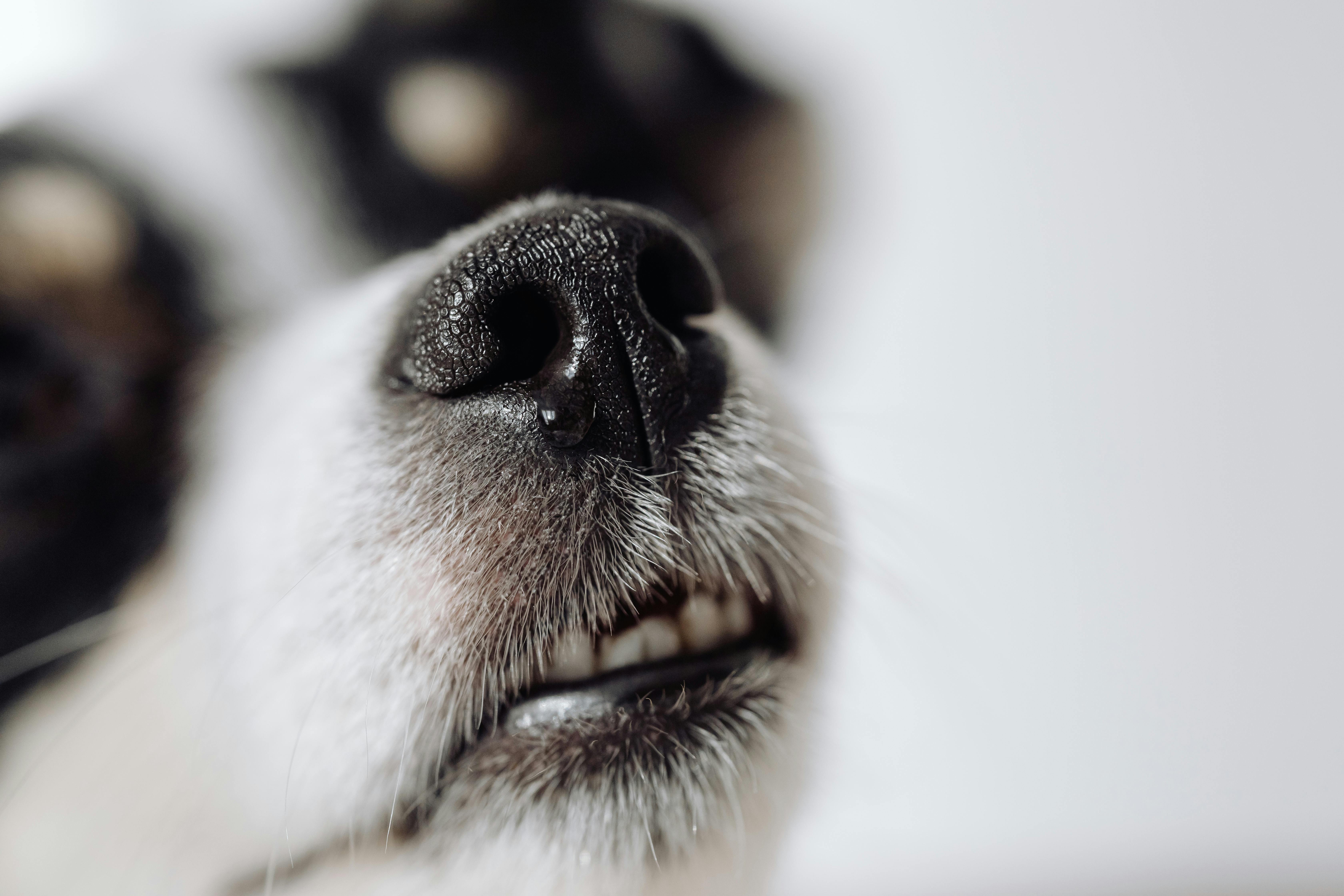
When you think about dogs, one of the first things that come to mind is their incredible ability to smell stuff. It’s kinda wild how they can sniff out things that humans can’t even dream about. So, can dogs smell better with wet noses? There’s a lot more going on with those wet little noses than you might think. Let’s dive into the fascinating reasons behind this unique feature and how it relates to their olfactory abilities.
Why Do Dogs Have Wet Noses?
Dogs have wet noses for several reasons. First off, the moisture on their noses helps enhance their sense of smell. Yup, it’s true! The wetness traps scent particles in the air, allowing dogs to pick up on different smells more effectively. This is super important for dogs because they rely heavily on their noses for communication and navigation.
Here’s a quick breakdown of why dog noses are wet:
- Scent Enhancement: Wet noses absorb scents better than dry ones.
- Temperature Regulation: Dogs don’t sweat like humans. Their noses help keep them cool.
- Health Indicator: A wet nose is often a sign of a healthy dog, but it can vary.
- Communication Tool: Dogs use their noses to gather information about their environment, including the scents of other animals and humans.
The Science of Dog Smell
Now, let’s get a bit nerdy. Dogs have an astonishing number of scent receptors—up to 300 million, compared to a human’s mere 5 million. This means they can detect certain odors at incredibly low concentrations. Ever wonder how they can find lost people or detect drugs? It’s all about their olfactory anatomy.
Dog Nose Anatomy
- Nasal Turbinates: These are complex structures inside a dog’s nose that help filter and humidify the air they breathe, maximizing scent detection.
- Jacobsen’s Organ: Also known as the vomeronasal organ, this little guy helps dogs process pheromones, which are crucial for social interactions.
Can Dogs Smell Better with Wet Noses?
So, does a wet nose make a dog smell better? Kinda, yes! The moisture helps capture scent particles, making it easier for them to identify different odors. The wetness also contributes to their ability to distinguish between various smells. Think about it like this: if you were trying to pick out a specific flavor in a soup, a spoonful of broth would help much more than a dry spoon, right?
Interesting Facts About Dog Noses
Here are some cool facts that you might not know about dog noses:
- Unique Patterns: Just like human fingerprints, every dog has a unique nose print. It can even be used for identification!
- Nose Temperature: A dog’s nose is usually cooler than the rest of its body. This can help regulate their body temperature.
- Nasal Surface Area: The surface area of a dog’s nasal cavity is significantly larger than a human’s, allowing for greater scent detection.
Practical Examples of Canine Olfactory Abilities
Dogs are used in various fields because of their amazing sense of smell. Here are some examples:
- Search and Rescue: Dogs can locate missing persons in disaster situations, often finding them faster than humans can.
- Medical Detection: Some dogs can detect diseases like cancer or diabetes by smelling changes in a person’s body chemistry.
- Law Enforcement: K9 units use dogs to sniff out drugs, explosives, and even currency.
Comparison: Dogs vs. Humans
Let’s look at how dogs stack up against humans in terms of smell:
- Scent Receptors: Dogs (300 million) vs. Humans (5 million)
- Olfactory Bulb Size: Dogs (larger) vs. Humans (smaller)
- Ability to Detect Scents: Dogs (can detect at parts per trillion) vs. Humans (limited detection)
A Final Thought
Understanding why dogs have wet noses and how it relates to their extraordinary sense of smell opens up a whole new appreciation for our furry friends. Their noses are not just cute but are also complex tools that enhance their ability to interact with the world around them. So next time you see a dog with a wet nose, remember that they’re equipped with some of the most powerful sniffing abilities on the planet! It’s a remarkable gift that makes them truly special companions.
Wet Noses and Emotional Bonding: How Your Dog’s Nose Reflects Their Feelings

Dogs are often called man’s best friend, and their wet noses play a fascinating role in our emotional bonding with them. Have you ever noticed your dog’s nose? It’s more than just a cute feature; it’s a reflection of their feelings and health. Understanding why do dogs have wet noses can help you connect better with your furry friend.
The Science Behind Wet Noses
Dogs have wet noses primarily to help them smell better. A dog’s sense of smell is far superior to humans, and a moisture-rich nose enhances their olfactory capabilities. The wetness comes from mucous glands that produce moisture, which helps capture scent particles in the air more efficiently. Here’s some science to chew on:
- Increased Surface Area: The wet surface of a dog’s nose increases the area for scent detection.
- Temperature Regulation: Wet noses also help in regulating their body temperature. Dogs don’t sweat like humans do; instead, they rely on their noses and panting to cool down.
- Health Indicator: A wet nose can indicate a dog’s health status. It’s often a sign of hydration, while a dry nose can suggest illness or dehydration.
Emotional Bonding Through Touch
Dogs use their noses to communicate with us and other animals. When your dog nudges you with their wet nose, it’s often a sign of affection or a request for attention. These interactions strengthen the emotional bond between you and your pet. It’s interesting how something as simple as a wet nose can express a myriad of feelings. Here are some examples of what your dog may be feeling:
- Affectionate: Nuzzling with a wet nose is a way dogs show love.
- Curious: When they sniff around with their noses, they are exploring their environment.
- Anxious: A wet, cold nose might indicate stress or anxiety, especially in unfamiliar situations.
Why Do Dogs Have Wet Noses? A Closer Look
The reasons behind a dog’s wet nose are not only functional but also deeply rooted in their evolution. Historically, dogs descended from wolves, and a moist nose was beneficial for hunting and survival. Here’s a look at some reasons:
- Enhanced Smelling Ability: Dogs have up to 300 million olfactory receptors, compared to humans’ 5 million. The moisture helps them detect more scents.
- Thermoregulation: Wet noses cool down the dog’s body, much like sweating does for humans.
- Social Interaction: Dogs often greet each other by sniffing noses, which is a critical social behavior.
Fun Facts About Dog Noses
Here are some fun tidbits about dog noses that you may not have known:
- Unique Patterns: Just like human fingerprints, every dog has a unique nose print that can be used to identify them.
- Color Differences: A dog’s nose color can change with the seasons, becoming lighter in winter and darker in summer.
- Nose as a Tool: Dogs can use their noses to detect certain diseases in humans, such as diabetes or even cancer.
Keeping Your Dog’s Nose Healthy
A wet nose is generally a sign of good health, but it’s essential to monitor changes. If you notice your dog’s nose becoming excessively dry, cracked, or showing other changes, consider these steps:
- Hydration: Make sure your dog drinks enough water daily.
- Humid Environment: If you live in a dry area, using a humidifier can help maintain moisture levels.
- Regular Vet Check-ups: Routine veterinary visits can catch potential health issues early.
The Emotional Connection
Your dog’s nose is more than just a sniffing tool; it’s a gateway to understanding their emotions. When your dog leans in with their wet nose, it creates a moment of connection. Dogs read human emotions incredibly well, and their wet noses can be a sign they are tuned into your feelings too. They may sense when you are down or happy and respond with a gentle nudge, reinforcing that bond.
So, why do dogs have wet noses? The answer is a delightful mix of biology, communication, and emotional connection. Whether it’s their method of exploring the world or their way of showing love, a dog’s wet nose is truly fascinating. Next time your dog nudges you with their moist snout, remember, it’s not just a cute gesture — it’s a profound expression of their feelings and a unique part of your shared journey together.
Why Does Your Dog’s Nose Change Wetness? 7 Factors That Influence Nose Moisture
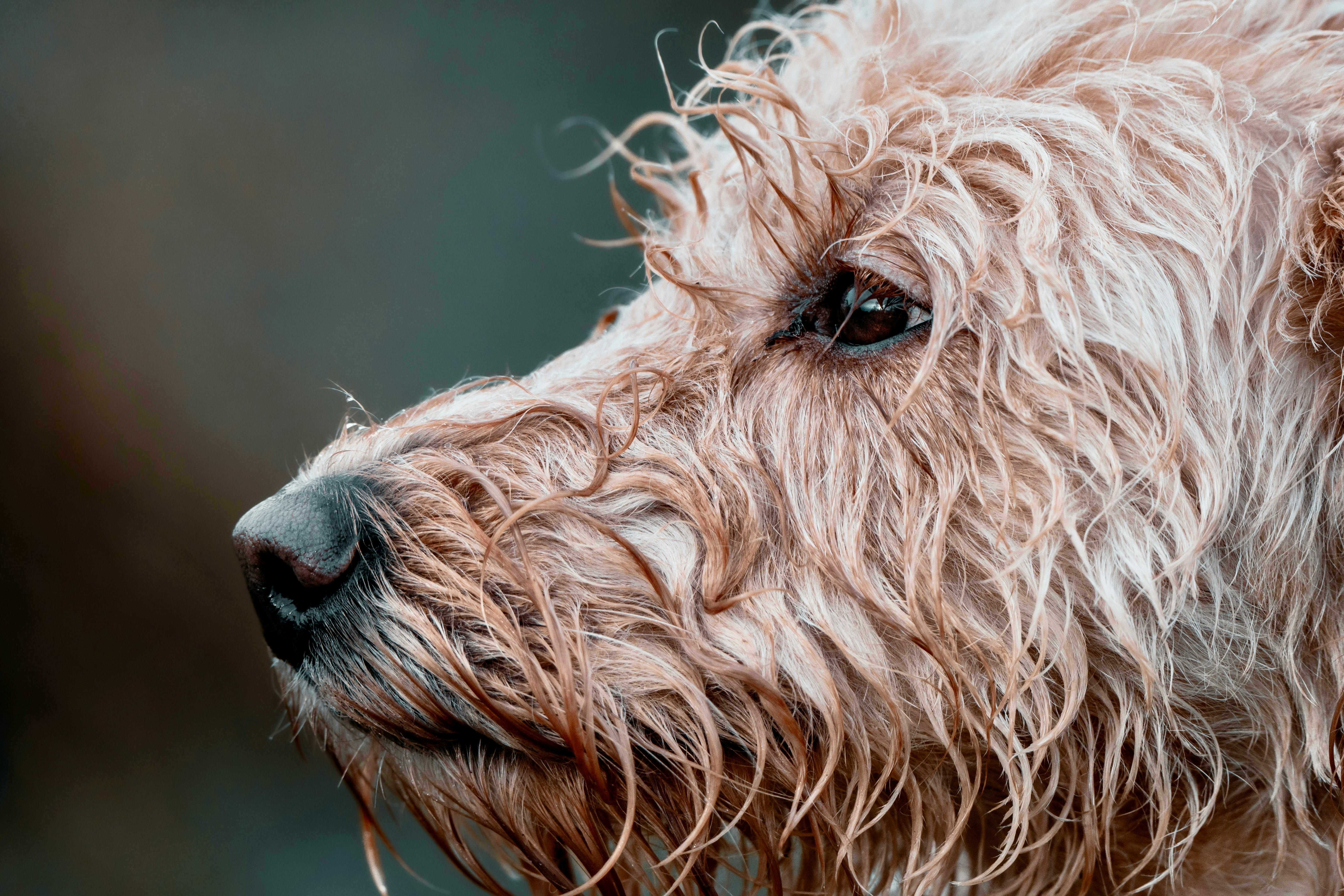
Have you ever wondered why your dog’s nose changes wetness throughout the day? It’s a common observation among pet owners, and there’s actually a range of factors that contribute to this phenomenon. A wet nose is often seen as a sign of a healthy dog, but the science behind it is pretty fascinating, with several reasons why dogs have wet noses in the first place. Let’s dive into the seven main factors that influence nose moisture in your furry friend.
1. Temperature Regulation
Dogs can’t sweat like humans do. Instead, they cool themselves through their noses and paws. When it’s hot outside, a dog’s body might produce more moisture to help regulate temperature. This can make their nose feel wetter. Conversely, when it’s cold, the nose may dry out slightly because they’re not as active in cooling down.
2. Environmental Conditions
The climate around you can have a big impact on your dog’s nose moisture. If you live in a humid area, your dog’s nose may stay wet longer. On the other hand, dry air can lead to a drier nose. Seasonal changes, like moving from summer to winter, can also play a role in how moist your dog’s nose is.
3. Health and Hydration
A dog’s overall health is often reflected in their nose. If your pup is dehydrated or sick, their nose can become dry and cracked. Keeping your dog well-hydrated is essential for maintaining a healthy nose. Some signs of dehydration can include:
- Dry gums
- Lethargy
- Loss of appetite
4. Breed Differences
Different breeds have different nose types and moisture levels. For instance, brachycephalic breeds like Bulldogs and Pugs may have drier noses compared to longer-nosed breeds like Greyhounds. It’s interesting to note that certain breeds are more prone to specific health issues that can affect nose moisture as well.
5. Excitement and Activity
When dogs get excited, their bodies can produce more moisture. After a good run or play session, their noses may feel wetter. This is a natural response to physical activity, as their bodies work to cool down. The more active your dog is, the more likely their nose will be moist after playtime.
6. Age and Life Stages
Puppies often have wetter noses than older dogs. As dogs age, they might experience changes in their skin and coat, including their nose. Older dogs may have drier noses due to reduced oil production in their skin. Just like humans, as dogs age, their bodies change in many ways.
7. Allergies and Irritants
If your dog’s nose suddenly changes from wet to dry, it might be a sign of allergies or irritants in the environment. Pollen, dust, or even certain foods can cause reactions that affect moisture levels. If you notice other symptoms like sneezing or itching, it’s a good idea to consult with your veterinarian to rule out allergies.
Why Do Dogs Have Wet Noses? Discover The Fascinating Reasons!
Now that we know the factors influencing your dog’s nose moisture, let’s explore why they generally have wet noses in the first place. Wet noses help enhance a dog’s sense of smell. The moisture captures scent particles from the air, allowing dogs to have an incredible olfactory sensitivity. A dog’s sense of smell is roughly 10,000 to 100,000 times more acute than a human’s, and the wet nose plays a crucial role in this ability.
Moreover, a wet nose also helps keep the dog’s body temperature regulated. This natural cooling method is vital, especially during hot weather. Plus, a moist nose can be a sign of your dog being happy and healthy, but it’s not the only indicator of well-being.
When you observe your dog’s nose, remember that changes in moisture can be entirely normal, but it’s good to keep an eye on any sudden shifts. If your dog’s nose becomes persistently dry or cracked, it’s best to consult a vet.
So, next time you pet your furry friend, take a moment to notice their wet nose and all the fascinating factors that contribute to it. Whether it’s the weather, their activity level, or even allergies, understanding these elements can help you monitor your dog’s health more effectively. After all, a dog’s nose is not just cute; it’s a window into their overall well-being.
The Role of a Wet Nose in Dog Communication: What Your Pup is Really Trying to Say
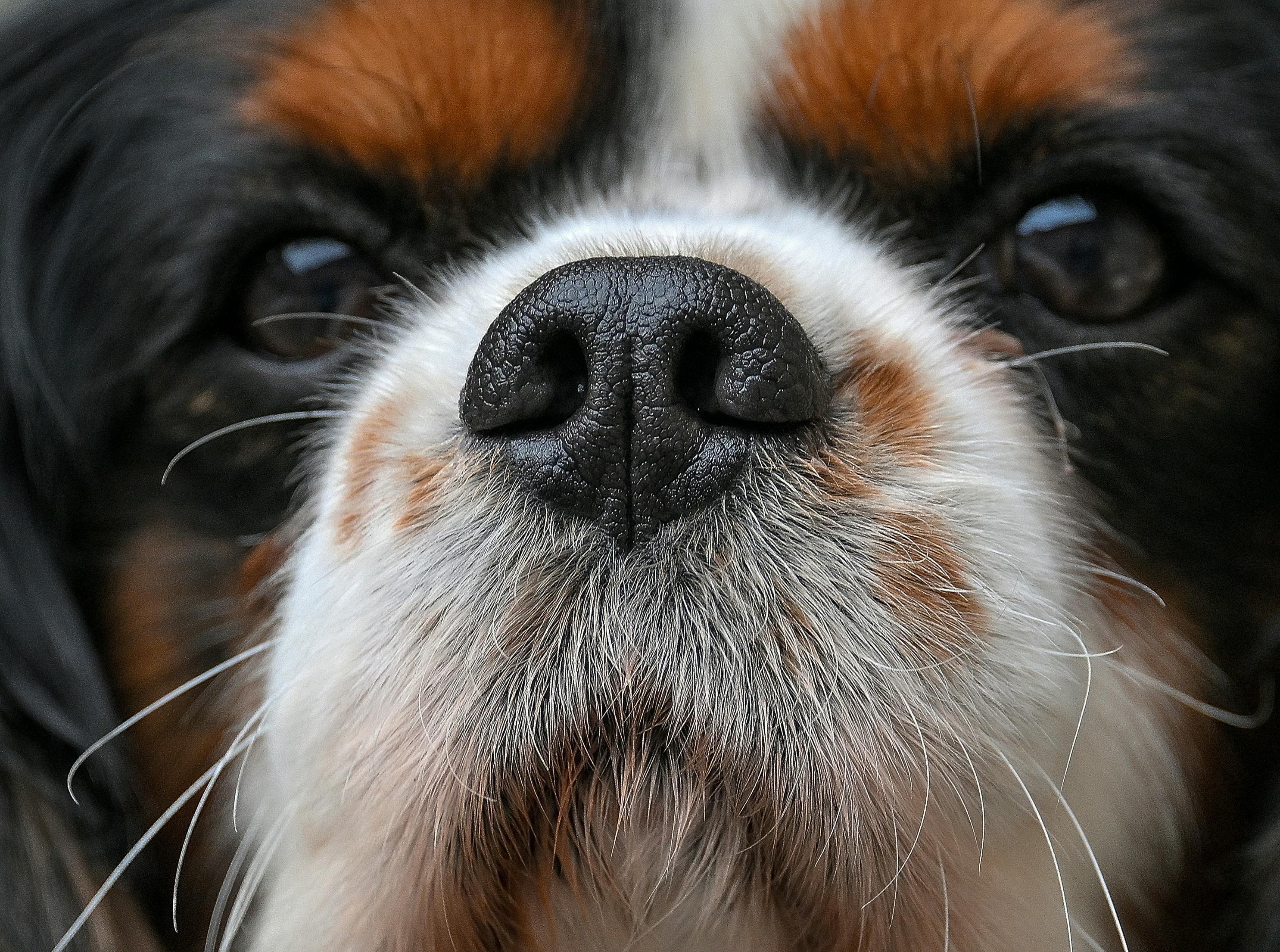
The bond between dogs and humans is something special, and one of the most intriguing aspects of this relationship is how dogs communicate. People often ask, “Why do dogs have wet noses?” It’s a fascinating question that opens a window into the way our furry companions express themselves. The wetness of a dog’s nose is not just an adorable quirk; it plays a vital role in how they interact with the world. Let’s explore this along with some interesting facts about dog communication.
The Importance of a Wet Nose
A dog’s nose is not merely wet; it’s covered in special cells that help them to detect scents. This is why their noses are often moist. When a pup’s nose is wet, it can absorb scent particles better, enhancing their sense of smell. You might even say that a wet nose is like a superpower for dogs! Here’s a quick look at why that moisture is important:
- Enhanced Smell: Wetness helps trap scent particles, allowing dogs to gather more information about their environment.
- Temperature Regulation: Dogs don’t sweat like humans do. Instead, they use their noses to help cool themselves down.
- Social Interaction: Dogs often greet each other by sniffing each other’s noses, so a wet nose can signal health and vitality to other dogs.
What Your Pup is Really Trying to Say
Dogs communicate through a variety of signals—body language, barking, and yes, even their noses! Here’s a deeper dive into what your dog’s wet nose might be conveying to you:
- Affection and Trust: When a dog nudges you with their wet nose, it’s often a sign of affection. They could be saying, “Hey, I love you!” or “Let’s play!”
- Curiosity: Dogs are naturally curious creatures. A wet nose can indicate that your pup is interested in something new in their environment.
- Seeking Attention: If your dog keeps poking you with their nose, they might be trying to get your attention for a walk or some playtime.
- Stress or Anxiety: Sometimes, a wet nose might signal discomfort. If your dog’s nose is excessively wet and they seem anxious, it might be worth checking in on them.
Why Do Dogs Have Wet Noses? Discover The Fascinating Reasons!
Beyond communication, the moisture of a dog’s nose has several other fascinating implications. Here are some key reasons why dogs have wet noses:
- Health Indicator: A healthy dog typically has a moist nose. However, if the nose is too dry or cracked, it could be a sign of dehydration or illness.
- Scent Discrimination: Dogs have an extraordinary sense of smell—about 10,000 to 100,000 times more acute than humans. Their wet noses help amplify this ability.
- Environmental Awareness: Dogs use their noses to gather information about their surroundings. A wet nose means they can better recognize familiar scents or detect changes in their environment.
Fun Facts About Dog Noses
Here are some interesting tidbits about dog noses that you might not know:
- Unique Patterns: Just like human fingerprints, each dog’s nose print is unique and can be used for identification.
- Temperature Sensitivity: A dog’s nose can sense temperature changes, which helps them detect changes in their surroundings.
- Breeds and Nose Types: Different breeds have different nose types, and some are more adept at smelling than others. For instance, Bloodhounds are known for their incredible tracking abilities due to their keen sense of smell.
Final Thoughts
Understanding the role of a wet nose in dog communication can help strengthen the bond between you and your pup. It’s a reminder that our dogs are always trying to communicate with us in their own way. So, the next time you feel that gentle poke of a wet nose against your hand, remember that it’s not just a cute gesture; it’s a signal filled with meaning. Whether it’s love, curiosity, or a need for attention, your dog is always talking—you just have to learn to listen!
Keeping Your Dog’s Nose Healthy: Tips for Maintaining Optimal Moisture Levels

Keeping your dog’s nose healthy is more important than you might think. Many pet owners often wonder why do dogs have wet noses? It’s not just some quirky characteristic, but there’s actually fascinating reasons behind it. Moisture plays a crucial role in a dog’s health, and understanding how to maintain optimal moisture levels can contribute to their overall well-being. In this article, we will explore the importance of a dog’s nose, why it’s wet, and tips for keeping it healthy.
Why Do Dogs Have Wet Noses?
Dogs’ noses are wet for a variety of reasons. Here are some interesting facts about this unique aspect of our furry friends:
Temperature Regulation: A wet nose helps dogs regulate their body temperature. When a dog pants, the moisture on their nose evaporates, cooling them down.
Enhanced Smell: Dogs have an incredible sense of smell—much better than humans. The moisture on their noses helps to capture scent particles from the air, enhancing their ability to detect odors.
Health Indicator: The state of a dog’s nose can indicate health conditions. A dry or cracked nose might suggest dehydration or illness, while a moist nose is usually a sign of a healthy pup.
Behavioral Signals: Dogs often lick their noses as a way to communicate or express curiosity. The moisture helps them gather information about their environment.
Keeping Your Dog’s Nose Healthy
It’s important to ensure your dog’s nose stays in good condition. Here are some practical tips to keep that nose healthy and moist:
Hydration is Key: Always make sure your dog has access to fresh, clean water. Dehydration can lead to a dry nose, which can be problematic.
Humidity Matters: If you live in a dry climate, consider using a humidifier in your home. This can help maintain moisture levels not just in the air but also in your dog’s nose.
Regular Vet Check-ups: Routine veterinary visits can help catch any potential nose issues early. If you notice any changes in your dog’s nose, like excessive dryness or cracking, it’s best to consult your vet.
Limit Sun Exposure: Just like human skin, a dog’s nose can get sunburned. Make sure to limit their time in direct sunlight or use pet-safe sunscreen if they are going to be outside for a long time.
Avoid Irritants: Be mindful of your dog’s environment. Chemicals, smoke, or other irritants can dry out their nose. Keep their living space clean and free from harsh substances.
Common Nose Problems in Dogs
Here’s a list of common issues that can affect a dog’s nose and what to look out for:
Dry Nose: This could be caused by dehydration, allergies, or environmental factors. It’s often a temporary issue but should be monitored.
Cracked Nose: This can be painful for dogs. It can be due to dry weather or even certain health conditions.
Nosebleeds: If your dog experiences frequent nosebleeds, it may be a sign of an underlying health problem.
Discoloration: Changes in color can indicate a health issue. It’s best to consult with a vet if you notice something unusual.
How to Spot Nose Problems
Understanding how to identify potential issues with your dog’s nose is crucial. Here’s a simple checklist:
- Observe your dog’s nose regularly for any changes in texture or moisture levels.
- Check if your dog is licking their nose more than usual.
- Look for cracks or sores on or around the nose area.
- Monitor for any signs of discomfort or changes in behavior, such as reluctance to play or eat.
Final Thoughts
Keeping your dog’s nose healthy involves understanding why do dogs have wet noses and what factors contribute to their moisture levels. Hydration, humidity, and general care are essential for maintaining that perfect wetness. Be proactive, and you’ll not only help your furry friend thrive but also deepen the bond you share. A healthy nose often means a happy dog, and who wouldn’t want that? Remember, the next time your pup nudges you with their wet nose, it’s not just for affection; it’s a signal of their well-being too!
Are All Dog Breeds’ Noses Wet? Discover the Variations Across Different Breeds
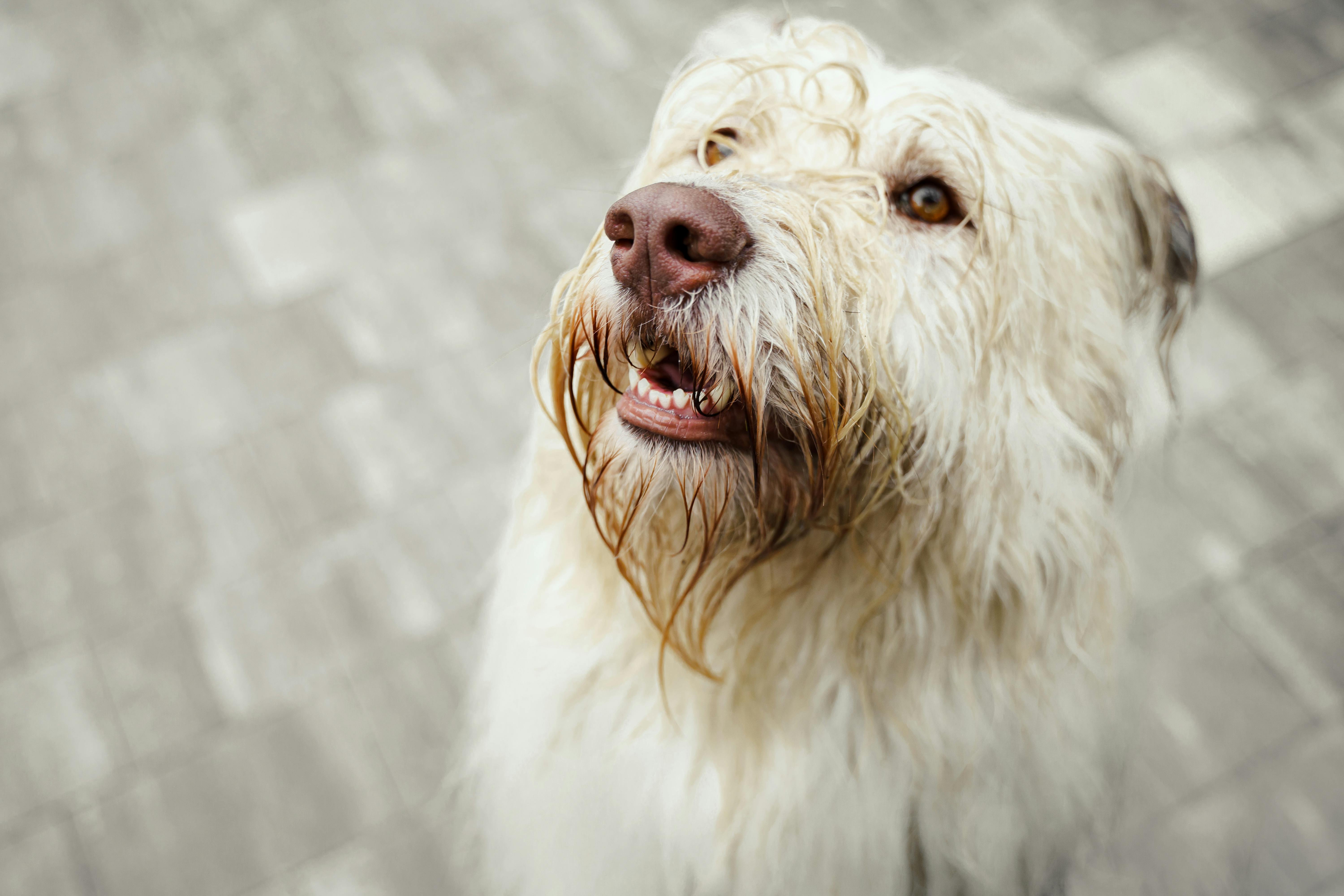
Are all dog breeds’ noses wet? This question often pops up among dog owners and enthusiasts alike. It’s a fascinating inquiry into the world of our furry friends. Some folks might think that all dogs have wet noses, but that’s not entirely the case. Different dog breeds show variations in nose moisture. So, let’s dive into the reasons why dogs have wet noses and explore the differences across breeds.
Why Do Dogs Have Wet Noses?
Dogs have wet noses for a variety of reasons. It’s a common misconception that a wet nose means a dog is healthy, however, that’s not always true. Here some interesting reasons why dog noses are typically damp:
- Temperature Regulation: Just like humans sweat, dogs use their noses to help regulate body temperature. Their moist noses help them cool down by evaporating moisture.
- Enhanced Smell: A wet nose can pick up scents better than a dry one. The moisture on the nose captures scent particles in the air, making it easier for dogs to smell.
- Communication: Dogs use their noses to communicate with other dogs. A wet nose can indicate excitement or interest, while a dry nose might signal stress or discomfort.
- Health Indicator: While not definitive, a wet nose is often seen as a sign of good health. However, other factors should be considered as well, such as behavior and appetite.
Do All Dog Breeds Have Wet Noses?
Not all dog breeds have consistently wet noses. The amount of moisture can vary significantly, and here are some factors that contribute to this variation:
- Breed Characteristics: Certain breeds, like Bulldogs and Pugs, may have drier noses due to their unique facial structures. Their flattened noses can limit the amount of moisture.
- Environmental Factors: The climate also plays a role. In dry or warm environments, a dog’s nose may dry out more quickly.
- Health Issues: Illness or dehydration can cause a dog’s nose to become dry. If you notice drastic changes in your pet’s nose moisture, it may be time to consult a veterinarian.
Variations Across Breeds
Here is a breakdown of how different breeds might differ in their nose moistness:
| Dog Breed | Typical Nose Moistness | Notes |
|---|---|---|
| Labrador Retriever | Wet | Known for their friendly demeanor and moist noses. |
| Bulldog | Dry | Their unique face shape contributes to nose dryness. |
| Poodle | Wet | Generally healthy and moist noses. |
| Dachshund | Wet | Active and playful, often have moist noses. |
| Shar Pei | Variable | Their skin structure can lead to varied moisture levels. |
Fascinating Facts About Dog Noses
Did you know that a dog’s sense of smell is far superior to ours? Here are some mind-blowing facts about dog noses:
- Scent Receptors: Dogs have about 220 million scent receptors in their noses, compared to about 5 million in humans. This allows them to detect scents at incredibly low concentrations.
- Unique Patterns: Just like human fingerprints, each dog has a unique nose print. It can be used for identification purposes.
- Nasal Heat Sensors: Dogs have special structures in their noses that can detect temperature changes, helping them identify different scents even in varying conditions.
Keeping Your Dog’s Nose Healthy
While wet noses are generally a good sign, it’s essential to maintain your dog’s overall health. Here are some tips to ensure their nose stays in great shape:
- Hydration: Always provide fresh water to keep your dog hydrated.
- Regular Vet Checkups: Routine checkups can help catch any potential health issues early.
- Environmental Care: Shield your dog from extreme weather conditions that can dry out their nose.
Conclusion
In the end, while many dogs have wet noses, it varies by breed, health, and environmental conditions. Understanding these factors can help you better care for your furry friend. If you ever notice significant changes in your dog’s nose moisture, don’t hesitate to reach out to a vet. They can provide the best advice tailored to your dog’s specific needs. Whether your dog’s nose is a bit dry or perfectly moist, the most important thing is the love and care you provide.
Wet Noses and Temperature Regulation: How Dogs Stay Cool with Their Unique Physiology
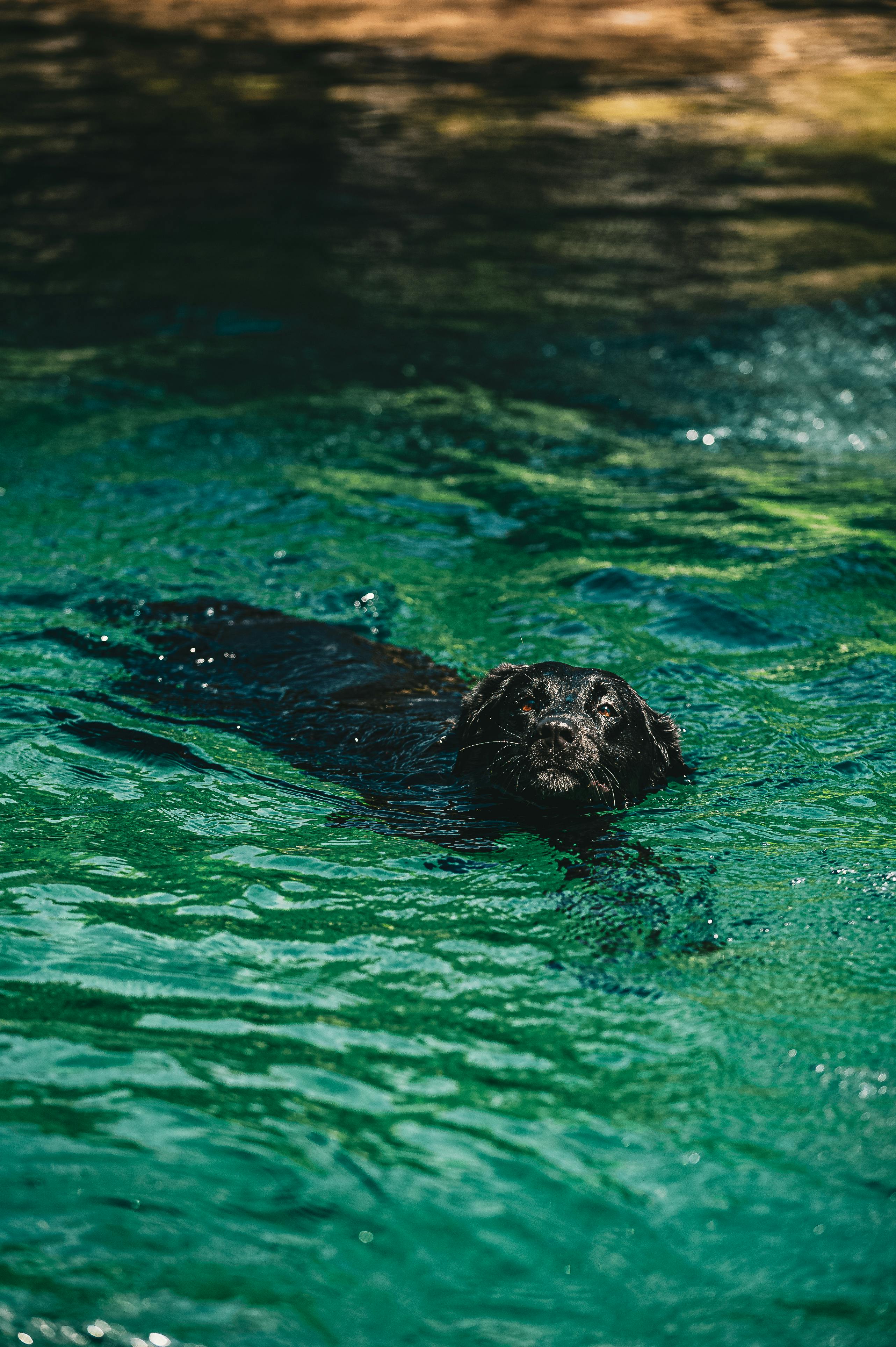
Have you ever wondered why dogs have wet noses? This unique feature of our furry friends isn’t just cute; it plays a crucial role in their overall health and wellbeing. Dogs, with their distinct physiology, have developed several fascinating mechanisms that help them stay cool, particularly in hot weather. Understanding these mechanisms can also shed light on why their noses tend to be damp, a characteristic that many pet owners notice but may not fully understand. Let’s dive into the amazing world of dogs, their temperature regulation, and the science behind those wet noses.
The Physiology of a Dog’s Nose
A dog’s nose is not just a sensory tool; it’s also a vital part of how they regulate their body temperature. The moisture found on their noses helps them cool down. When a dog licks their nose, the evaporation of this liquid creates a cooling effect. This is similar to how sweat works in humans. As the moisture evaporates, it takes heat away from the surface of the skin, thus lowering the dog’s body temperature.
Here are some interesting facts about a dog’s nose:
- Dogs have approximately 300 million scent receptors in their noses, compared to about 6 million in humans.
- The wetness of a dog’s nose can enhance their sense of smell by trapping scent particles.
- Dogs can detect smells at concentrations nearly 100 million times lower than humans can.
Why Do Dogs Have Wet Noses?
So, why do dogs have wet noses? There are several reasons for this fascinating feature. Here’s a quick rundown:
- Enhanced Smell: The moisture on a dog’s nose helps capture and hold scent molecules. This helps them smell better.
- Temperature Regulation: As mentioned earlier, wet noses help dogs cool off through evaporation, much like how humans sweat.
- Health Indicator: A wet nose is often seen as a sign of a healthy dog. A dry nose, in contrast, could indicate dehydration or illness. However, it’s important to understand that nose moisture can vary throughout the day based on activity levels, weather, and health.
The Role of Panting
In addition to their wet noses, dogs also rely on another method for cooling off: panting. When dogs pant, they are able to regulate their body temperature more effectively. Here’s how it works:
- Increased Airflow: Panting increases airflow over a dog’s tongue and throat, which promotes evaporation of moisture and cools the blood flowing through those areas.
- Efficient Heat Exchange: As warm air is exhaled, cooler air is inhaled, which helps to bring down their core temperature.
Comparing Dogs and Humans
When we think about temperature regulation, it’s interesting to compare how dogs and humans do it. Here are some differences:
| Feature | Dogs | Humans |
|---|---|---|
| Primary Cooling Method | Panting and wet noses | Sweating |
| Nose Structure | Moist, highly sensitive | Dry, less sensitive |
| Scent Detection | Highly developed | Less developed |
Factors Affecting Nose Wetness
The wetness of a dog’s nose can also be influenced by several factors:
- Weather: Humid conditions may keep a dog’s nose wetter, while dry weather can lead to it being drier.
- Health: Illnesses or dehydration can lead to a dry nose, so it’s important to keep an eye on changes.
- Activity Level: After exercise, a dog’s nose may be wetter due to increased licking and panting.
Fun Facts About Dogs’ Noses
- The color of a dog’s nose can vary based on breed, age, and even season. Some dogs may have a seasonal change in nose color, which is called “snow nose.”
- Just like humans have unique fingerprints, each dog’s nose print is unique and can be used for identification.
- A dog’s sense of smell is so powerful that they can even detect certain diseases in humans, including some forms of cancer.
Understanding the reasons behind why dogs have wet noses not only gives us insight into their unique physiology but also helps us take better care of our furry companions. Keeping an eye on the moisture of your dog’s nose can be a simple way to monitor their health. Ultimately, these wet noses are just one part of what makes dogs incredibly fascinating creatures.
Conclusion
In conclusion, the wet noses of dogs serve multiple important functions, from enhancing their sense of smell to regulating their body temperature. The moisture on their noses helps to capture scent particles, making their already impressive olfactory abilities even more effective. Additionally, the cooling effect of a wet nose plays a crucial role in thermoregulation, especially during warmer weather. It’s fascinating to see how nature has equipped dogs with this unique feature, which not only aids in their survival but also strengthens the bond between them and their human companions. Next time you greet your furry friend, take a moment to appreciate the science behind that moist nose. If you want to learn more about your canine companion’s health and behavior, consider exploring further resources or consulting with a veterinarian to ensure your dog leads a happy and healthy life.

